Begin with the blade. For the shape you have a few options. You can trace a paddle you already own, try to copy a picture of one, or simply freehand. As long as it's the general shape of a paddle it will work. Don't be too concerned that you'll make a huge mistake. Just go with a shape your comfortable with.
For this example I used my tape measure and freehand to make a fairly standard shape. I did the layout on the backside (non-powerface) of the paddle since this surface is flat compared to the powerface which is the stairsteps still. The reason for this is so I can use my jigsaw easier on the flat surface. If your using a bandsaw or handsaw either side will work.

Next cut and shape to the final size. I normally use my jigsaw and rasp file, it's quick and accurate.
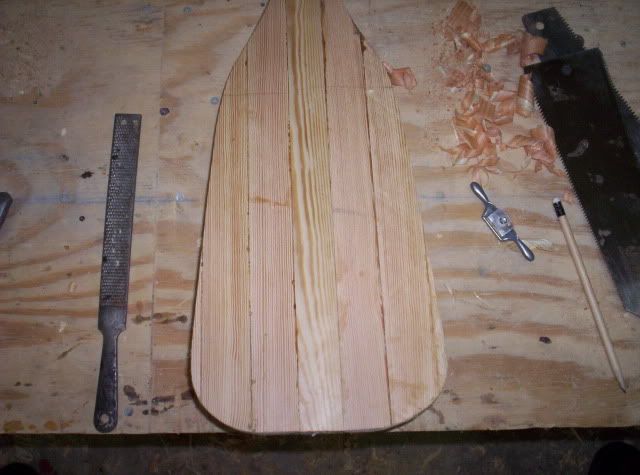
Now we'll move onto shaping the power face. As mentioned earlier we're making a dihedral which is simply two intersecting angles. This is part art, part sience. Take a little time to think about the wood as you remove it and you'll do fine.
The first step is to draw a pencil like all the way around the permiter of the edge. Mine is 1/4" from the backside of the blade.
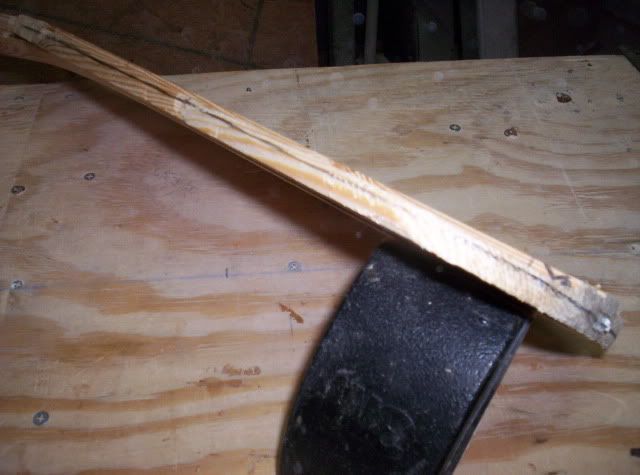
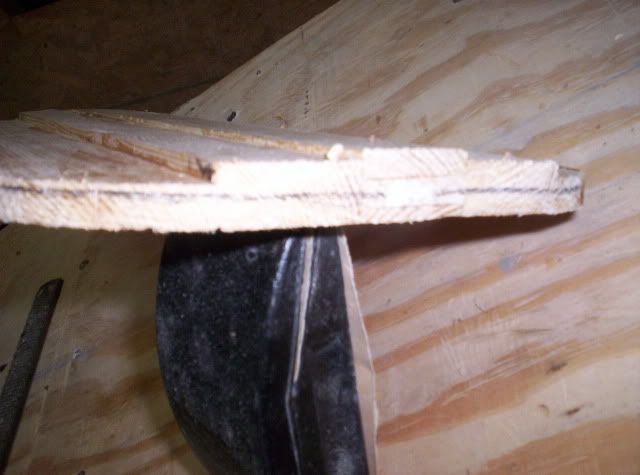
Then I used my hand plane to remove the wood at an angle to this line. Think of the very centerlide of your paddle as one point and this line as the second point, and simply connect the dots.
Here you can see one side angled and the other still a staircase.
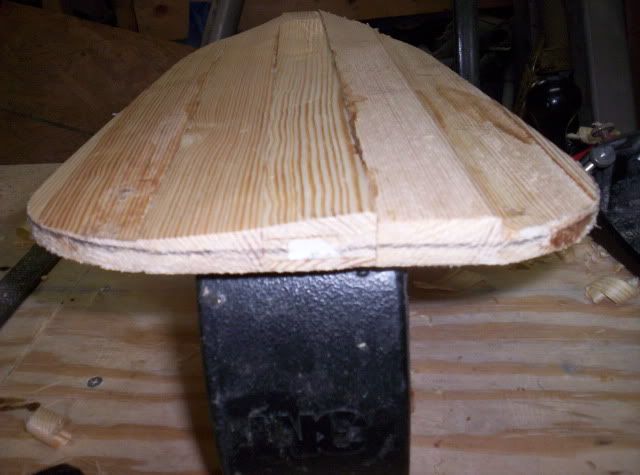
Next do the other side to match. Work slow and feel your work with your fingers, they can see things your eyes can't.
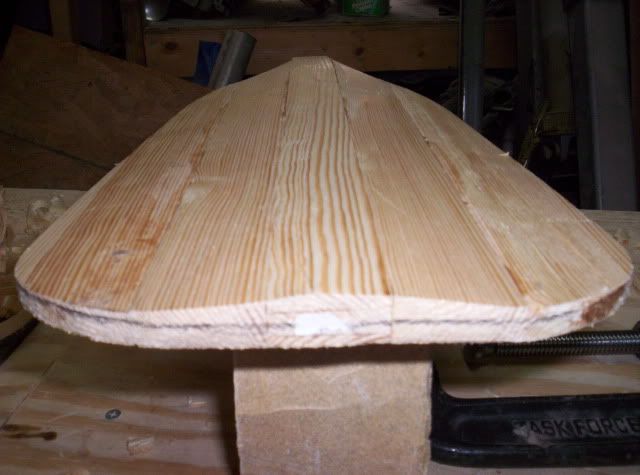
The last step I do is to 'flatten' the last 3-4" of the blade. The majority of the blade still has the dihedral but flattening the tip has 2 advantages. The first is a stronger catch when it first enters the water, the second is some slight weight reduction. The tip is the fathest point from your lower hand when you paddle so any weight removed here is felt the most.
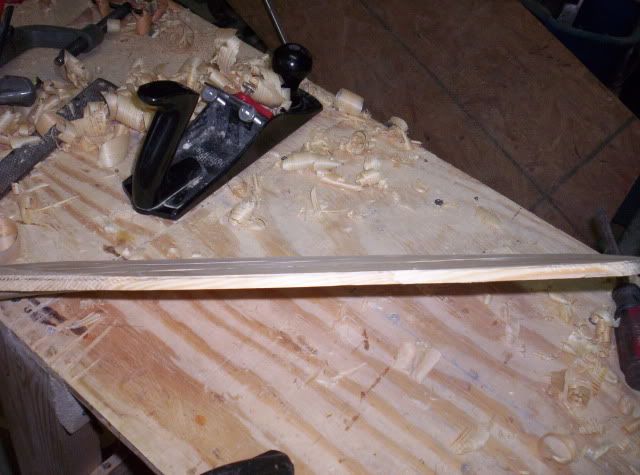

When your satisfied with your rough blade shape it's time to move onto the shaft.
For the shaft i'm using 3 tools to shape. The first to remove the majority of the wood is the hand place, second is the spokeshave and rasp file to finish the rounding.
Draw 2 lines on each side that split the width into 3 parts. What you end up with is a total of 8 lines all around the shaft. Just like before think of them as playing connect the dots to remove each corner at a 45 degree angle.
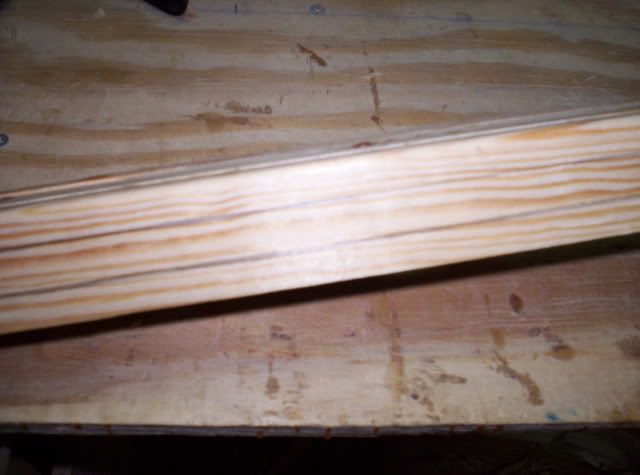
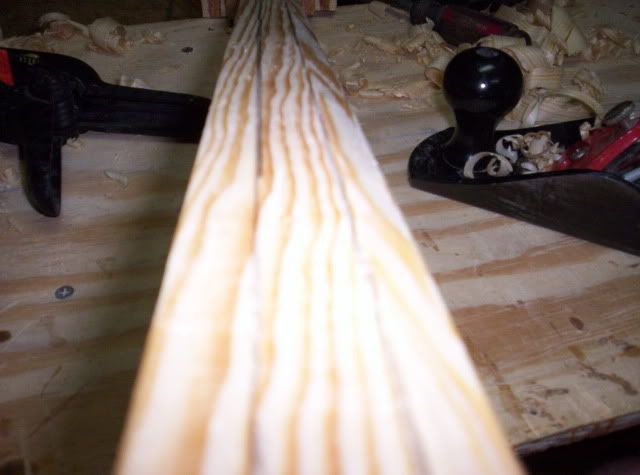
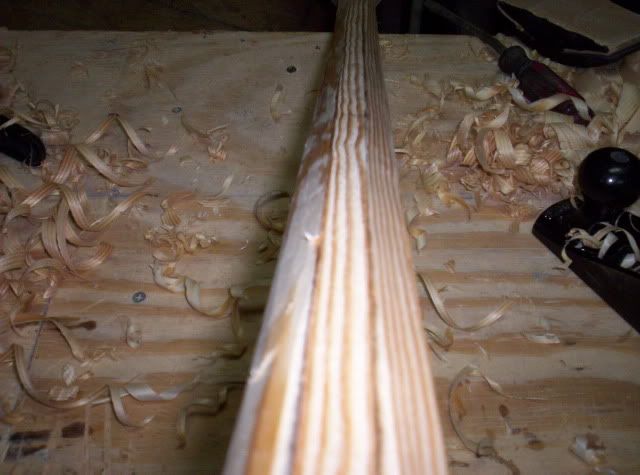
Next move onto using the spokeshave and/or rasp to round the shaft. If you don't have either tool you can set your hand plane to very shallow and use it and sandpaper to get teh same result. Just be VERY careful not to catch the grain the wrong way with the larger plane.
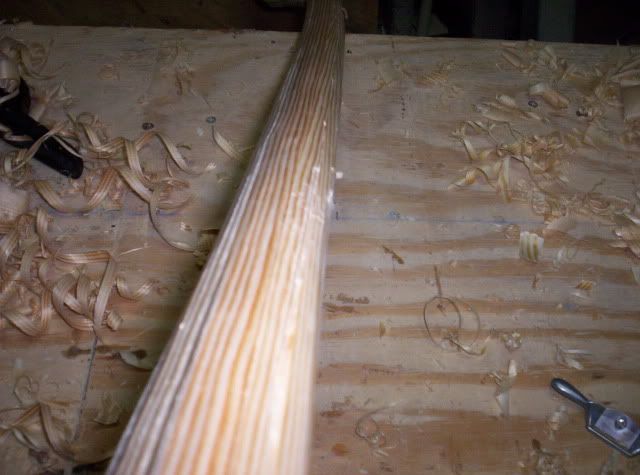
Next I attach a strip of the scrap wood onto the handle to thicken it. You can do this or leave it as-is depending on the type of handle you want.
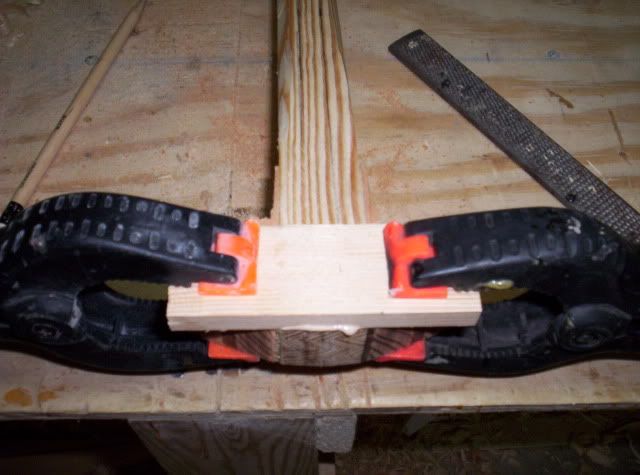
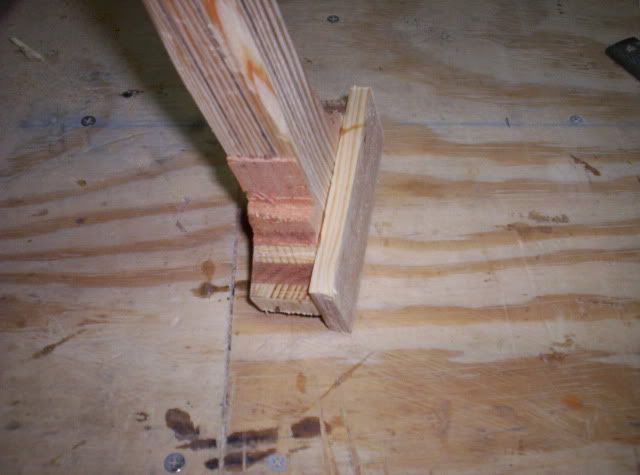
Now mark and cut out the handle shape. It's helpful to figure out your design on paper and cut it out as a template to trace onto the wood.
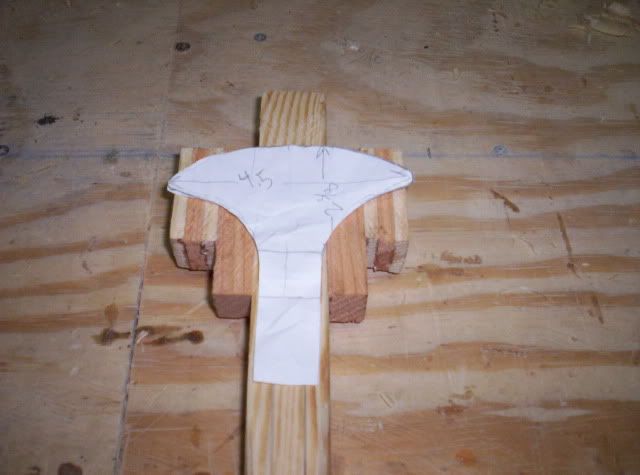

Using your jigsaw, file and sandpaper cut it to shape and begin rounding the edges.
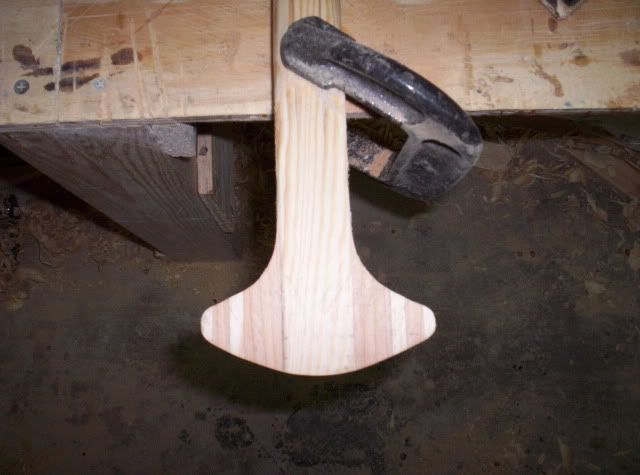
Every minute or so double check your progress by gripping the grip as you would when paddling. Remember you can always remove more materal as you go.
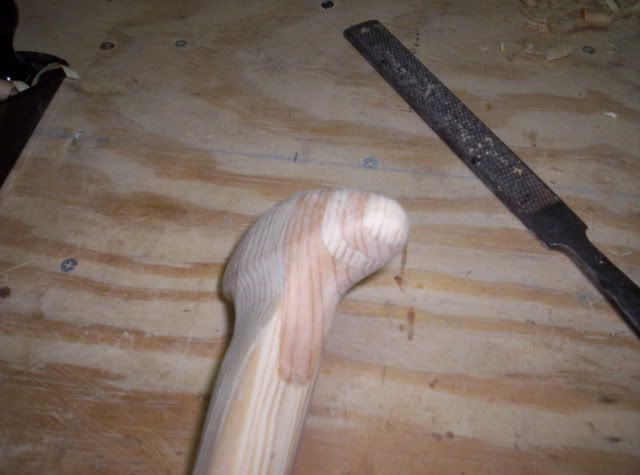
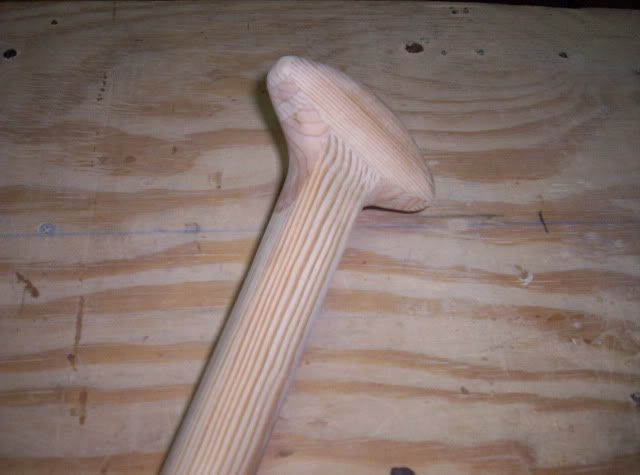
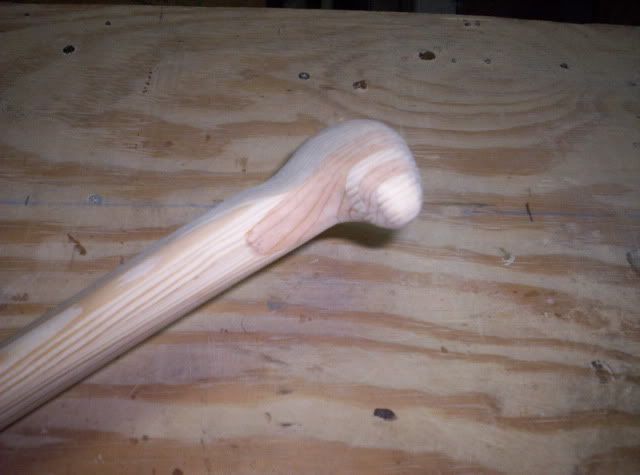
Work your way over the whole paddle, smoothing out and flat spots left on the shaft and sanding the blade on both sides. Also use your file and sandpaper to radius the edges of the blade to a nice curve. This helps with entry/exit of the water and also gets rid of sharp corners which will chip if they hit a rock.
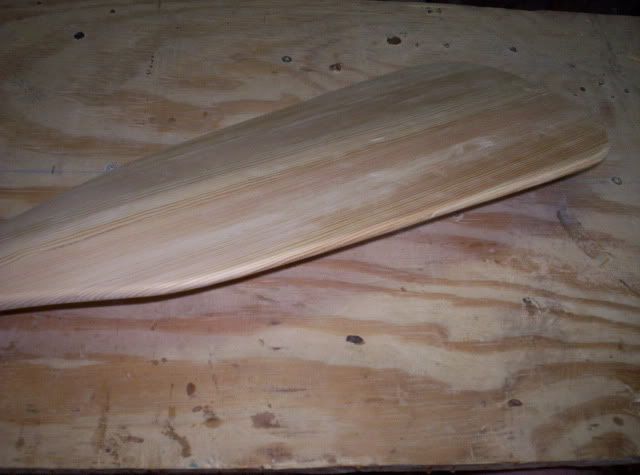
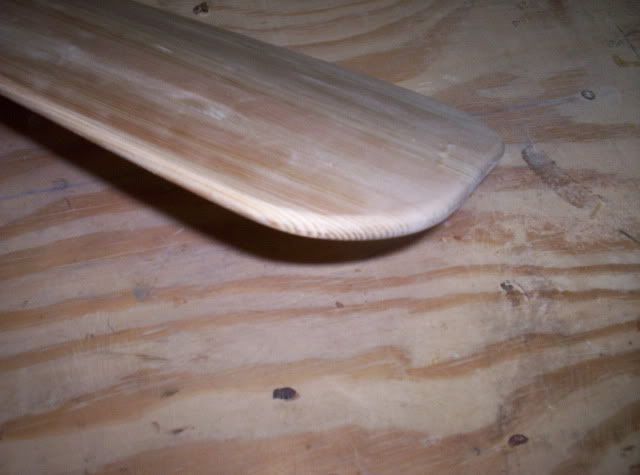
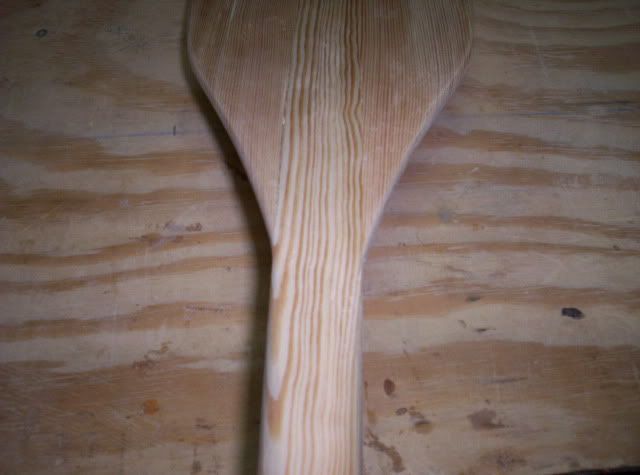
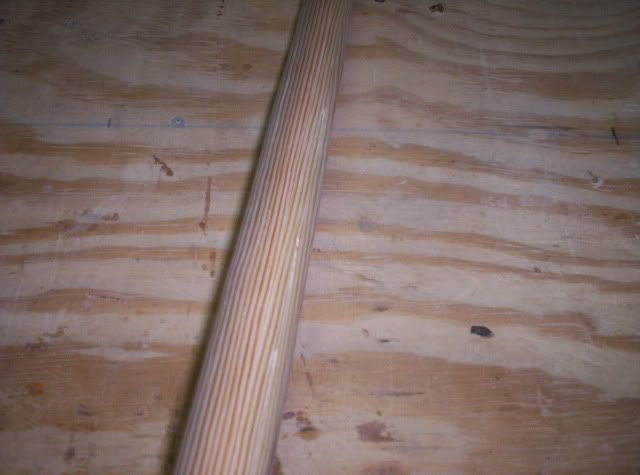

And now your canoe paddle is nearly complete, the last step will be applying a protective finish.
No comments:
Post a Comment